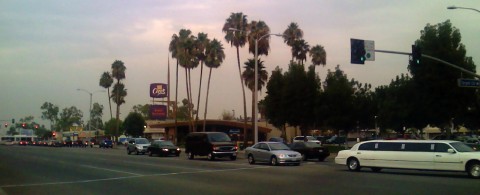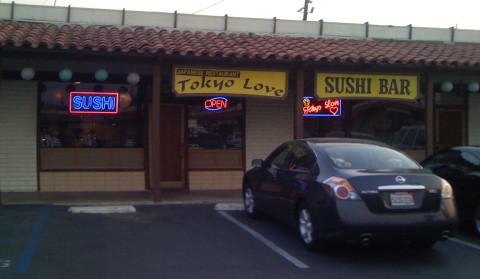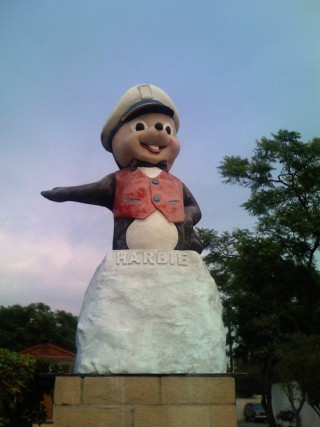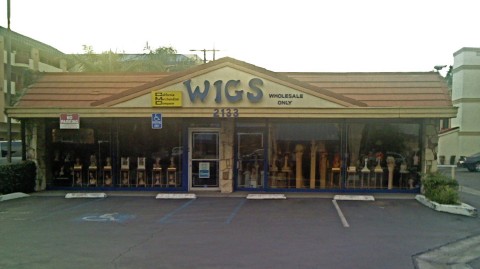New Jersey with palm trees
That was my first impression of Anaheim, and nothing I saw in the subsequent five-days did much to revise that initial judgment. Granted, I saw only a narrow slice of the area (basically, a two-mile stretch of Harbor Blvd.), but what I did see looked eerily similar (except for the foliage) to the suburban hell in which I grew up and from which I spent my twenties trying to escape. 
In making this comparison, however, I'm not just trying to insult smug Southern Californians. South Jersey and Orange County seem both to belong to an emerging class of, for lack of a better word, hyper-suburbs. Superficially, they embody, even perfect, the stereotypical image of suburban sprawl, all seven-lane arteries and generic shopping strips. However, once they reach a certain density, these hyper-suburbs start behaving, if not actually looking, like urban areas, becoming more ethnic (I recall stumbling on a Ukrainian grocery in a Cherry Hill, NJ, strip mall) and just plain weirder (the now-departed Pennsauken Mart). Within a tiny radius of our conference hotel, I managed to find a few hidden treasures:
Tokyo Love

Verified to be a real restaurant (with respectable sushi and gyoza) and not a massage parlor.
Harbie

Proud mascot of the CC Camperland RV Park, located right on Harbor Boulevard.
Wig Store

Sorry, wholesale only.
The conventional wisdom is that suburbs are bland and faceless, while small towns remain the bastions of local color and quirky charm. In some places that is no doubt true. Here in Eastern Kentucky, however, most of the individuality of the small towns has been given way to the encroachments of fast food and Wal-Marts. As a result, I find even the above specimens strangely uplifting.
